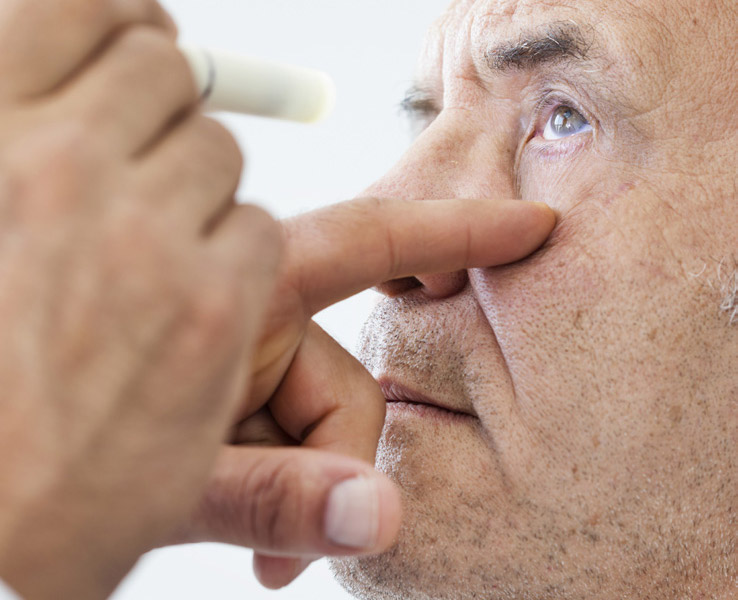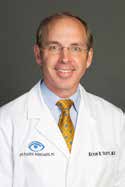Satellite Office
4660 Kenmore Avenue, Suite 416Alexandria, VA 22304
703-620-4300

Over the years, I have removed hundreds, if not thousands, of benign and malignant lesions or tumors that appear on the eyelid. As National Cancer Control Month takes place in April, I’m highlighting how you can stay alert to potential dangers and what I can do to help.
The following are common signs that may indicate a cancerous growth:
Several different types of skin cancers may cause these symptoms. By far, the most common is basal cell carcinoma, which accounts for over 90% of eyelid cancers. One positive side of this type of skin cancer is that it won’t spread to lymph nodes or other parts of the body; it only continues to grow locally. However, it is still essential to have it diagnosed and removed before it severely damages the critical structure of the eyelid and eye.
Other common cancers include:
Some of the most common types of benign lesions that form on the eyelid are called styes or chalazions. Typically, these are caused by blockage of oil glands. Xanthelasma is another common benign growth that results from an accumulation of cholesterol deposits under the skin. Another common growth is known as seborrheic keratosis, which appears as a stuck-on lesion with no malignant potential.
Distinguishing benign and malignant tumors is challenging because, at times, they may not have all the classifying features. This is why it is essential to receive a thorough eyelid examination should you notice any irregularity on your eyelid.
Once a diagnosis is made, the next steps of removal and healing can start. Benign lesions are typically removed and the eyelid is allowed to heal, whereas malignant tumors may require Mohs surgery, performed by a Mohs-trained dermatologist. In these situations, the Mohs surgeon would remove the tumor first thing in the morning in their office suite, then you would be sent to the Fair Oaks Hospital where I would begin the reconstructive process.
The best way to accomplish this is by reducing harmful UV exposure. We can’t reverse what we’ve already been exposed to, but we can prevent future exposure with sunglasses and wide-brimmed hats. Unfortunately, sunscreens can’t be used on the eyelid margin where tumors are most common.
|
If you’ve noticed a growth on your eyelid, I recommend calling my office and scheduling an appointment. I not only offer eyelid examinations, but I also remove most small tumors right in our Fairfax office in our fully equipped minor procedure room. We take care of hundreds of eyelid lesions a year, both benign and malignant. My team and I have the tools and experience to take care of you, your family, and your friends. |
  |